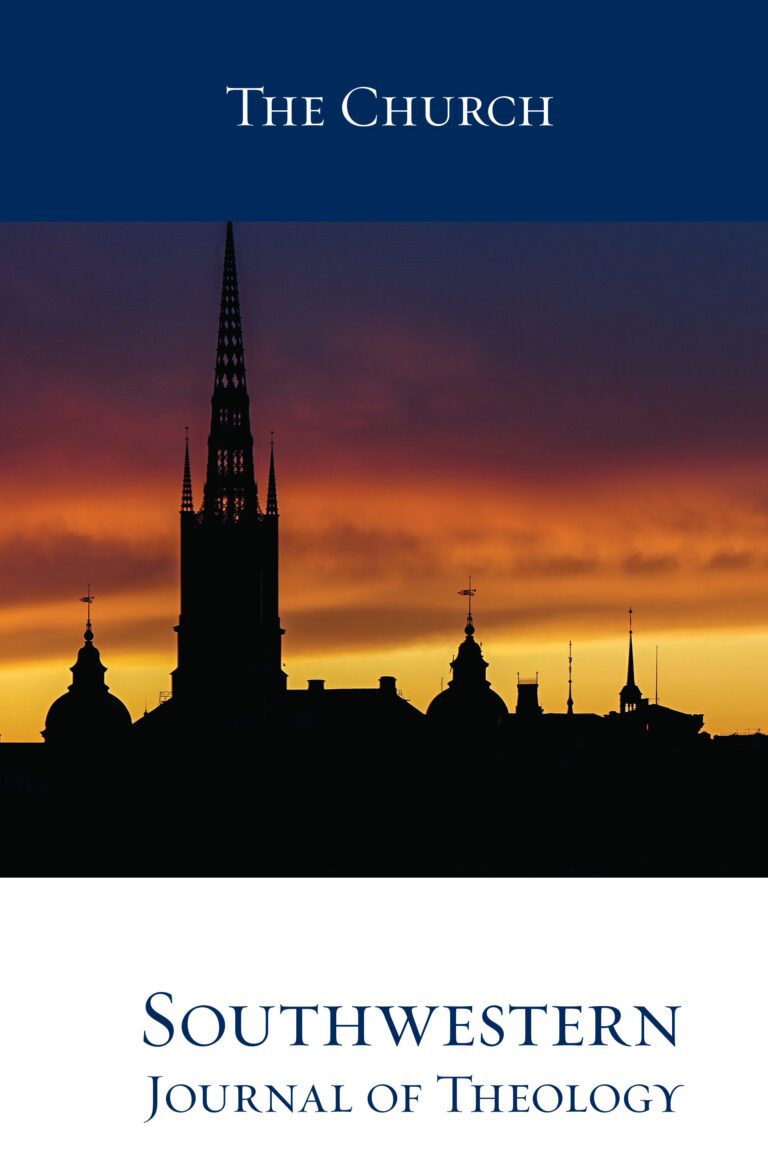
The Church
Southwestern Journal of Theology
Volume 61, No. 1 – Fall 2018
Editor: W. Madison Grace II
By Hans Boersma. Grand Rapids: Baker Academic, 2017. 316 pages. Hardcover, $39.99.
Writing at the intersection of current hermeneutical debates and patristic studies, Hans Boersma claims in this volume that the church fathers read Scripture as a sacrament. Boersma, to an extent, writes with the simple goal of describing the exegetical moves of the church fathers. “The main argument,” he writes, “is that they saw the Scriptures as a sacrament and read them accordingly” (1). By referring to Scripture as a sacrament, Boersma contends that the church fathers understood Christ to be the reality beneath the surface of the Scriptures. As Boersma puts it, “To speak of a sacramental hermeneutic, therefore, is to allude to the recognition of the real presence of the new Christ-reality hidden with the outward sacrament of the biblical text” (12). Boersma, however, is not merely writing a primer on patristic exegesis. Rather, he weaves together description and prescription and calls his reader to both observe and learn from the exegetical moves of the church fathers.
Developing his argument, and following the canonical shape of Scripture, Boersma presents patristic exegesis of Genesis, Exodus, Joshua, Psalms, Proverbs, Song of Songs, Isaiah, and Matthew. By doing so, he introduces evidence which cuts across various genres and provides examples of exegesis done on diverse texts. Similarly, Boersma marshalls a diverse crowd of church fathers as witnesses. Gregory of Nyssa, Augustine, and Athanasius appear, to name a few. However, while Boersma cites many patristic exegetes, his primary exemplar is Origen. Three early chapters examining the exegesis of Chrysostom and Origen, Melito of Sardis and Origen, and Origen, make Boersma’s affection for the Alexandrian theologian clear.
Beyond historical argumentation, Boersma argues a return to patristic exegesis “is both possible and necessary” (274). Among other reasons, to ground the doctrine of the Trinity in the Old Testament (160), renew the life of the church (279), and to retain relevance (275–76), spiritual readings of Scripture must be employed today. According to Boersma, the church fathers serve “as faithful guides in our reading of the biblical text” (104).
Aspects of Boersma’s work are commendable and fascinating. For example, his discussion of literal exegesis by the church fathers pushes boundaries and challenges simplistic understandings (30–31). From a historical perspective, Scripture as Real Presence is an informative and helpful portrait of patristic exegesis.
Furthermore, Boersma rightly challenges the tendency of some modern readers to dismiss the exegetical moves of the church fathers altogether. Far from dispassionate, he writes with vigor and investment, and he leaps to the defense of the church fathers. Without question, there are deep reservoirs of wisdom and knowledge in patristic exegetes, and Boersma’s elegant and passionate presentation could function as a remedy for those who prematurely dismiss them.
He, of course, anticipates this objection: “Spiritual interpretation is about moving from promise to fulfillment, from the outward to the inward, from the law to the gospel, from the letter to the spirit, from type to archetype, from sacrament to reality, and therefore from the Old Testament to the New Testament. As a result, questions surrounding spiritual interpretation often focus on how we are to read the Old Testament” (249–50). However, despite this observation, he argues, “Reading the New Testament text spiritually is exactly what the church fathers did” (250). But in contrast with eight chapters directly dealing with the Old Testament, one deals with the New Testament. When the limited evidence is examined, it does not cut across the diverse genres and texts of the New Testament in the same fashion as the Old Testament evidence. Therefore, his largely cogent historical argument falters at this point. While Boersma may be capable of substantiating his claim, this question remains unanswered: did the church fathers read New Testament epistolary or narrative literature sacramentally?
Additionally, Scripture as Real Presence is a tale of two arguments. On the one hand, Boersma presents a largely cogent historical description of patristic exegesis; on the other hand, he provocatively calls for a return to the exegesis of the church fathers. To be clear, Boersma makes no attempts to disguise his goal. He labels his book as a “project of ressourcement” (273).
Before fully embracing the exegetical methods of the church fathers, a few things must be kept in mind: The church fathers were historically situated and disagreed with one another. They were colored by the heresies they were responding to and the debates that raged during their time. Boersma correctly challenges modern readers to learn from and appreciate their example; however, their mistakes are also an opportunity to learn. More promising, grammatico-historical and redemptive-historical hermeneutical approaches, which Boersma rejects, frequently draw from patristic interpreters in balanced and responsible ways.
Furthermore, Boersma self-consciously argues for patristic exegesis because it lines up with his own metaphysical presuppositions (275). “My Christian Platonist convictions,” he states, “persuade me that everything around us is sacramental” (1). While readers will appreciate Boersma’s candor, those who do not share his basic commitments will predictably disagree with his conclusions.
Despite these critiques, Scripture as Real Presence has much to offer readers. Passionate, engaging, and provocative, Boersma is never a bore to read. In many ways, Scripture as Real Presence makes a notable contribution to wider conversations about the relationship of theology, history, and hermeneutics.





